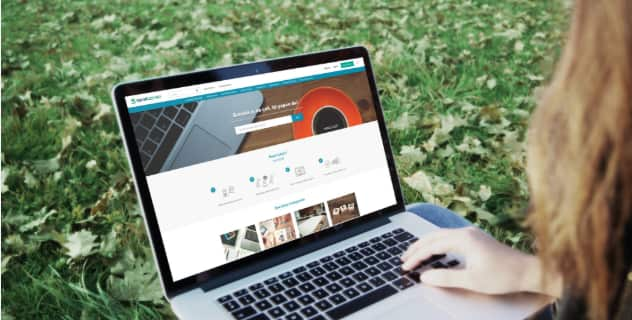Contents
Do you ever get tired of snoozing your morning alarm, the traffic jams, and the monotonous corridors of the plaza? Do you dream of a career where you set your own hours, choose your own projects, and receive direct compensation for your efforts? This dream is called freelance working, one of today’s most popular work models. However, this world of freedom may not be as easy as it seems, and the question of “where do I start?” holds many talented professionals back from embarking on this path.
In this article, we’ll discuss the first, most important steps you need to take to break through this wall of fear and become your own boss. We don’t think we need to remind you how important digital marketing and e-commerce are at this stage.

If you’re ready, let’s embark on the journey of becoming the captain of your own career ship!
Discover Yourself First and Define Your Niche
The most fundamental and critical step before venturing into the freelance world is to conduct a self-assessment. This goes deeper than simply asking, “What can I do?” First, write down your strongest talents and passions. What are you good at? Graphic design, copywriting, social media management, software development, or perhaps translation? What’s that special talent you’re constantly asked about, something you lose track of time doing? This is your potential service area.
After listing your freelance skills, consider how you can align them with market needs. For example, instead of simply saying, “I take beautiful photos,” defining a more specific “niche” like “product photography for small businesses” or “outdoor portrait photography for families” will set you apart from tens of thousands of general photographers. The more you narrow down your niche, the easier it will be for you to be perceived as an “expert” in that field and attract the right clients.

Being honest with yourself at this stage is crucial. Freelancing requires a high level of self-discipline, time management skills, and the ability to cope with uncertainty. There won’t be a boss to wake you up in the morning or an HR department to monitor your work hours. Are you self-motivated, able to work within a schedule, and able to handle rejection? These personal qualities are just as important as your professional abilities.
Self-Investment and Freelance Working
During this process, don’t hesitate to invest in yourself. Perhaps learning a new program or earning a certification through an online course in a subject you’re particularly skilled in will increase your market value. Freelance working is a dynamic field that requires constant learning and up-to-date learning. Investing in yourself is the greatest guarantee of your future earnings.
Ultimately, this first step lays the foundation for your entire freelance career. By clearly defining what you offer, who you offer it to, and how prepared you are for this journey, you’ll build on much more solid ground for the next steps.

An Impressive Portfolio and Personal Brand
No matter how talented you are, freelance life always requires potential clients to see it. This is where your portfolio, your best salesperson, comes into play. A portfolio is a collection of your previous work that concretely showcases your skills and style. If you’re wondering, “I’ve never done paid work before, what can I put in my portfolio?”, don’t worry. You don’t necessarily need to have worked with a client to create a portfolio.
If you’re just starting out, create your own “dream projects.” If you’re a graphic designer, design a logo and menu for a local coffee shop you love. If you’re a copywriter, create a blog post or social media posts for a tech brand you admire. If you’re a software developer, code a simple yet useful little web application. These projects are the most effective way to showcase your problem-solving ability, creativity, and technical skills to potential clients.

Use a professional platform to showcase your portfolio. A simple and stylish personal website, which you can easily create using platforms like Behance (for designers), GitHub (for developers), Medium (for writers), or tools like Squarespace/Wix, demonstrates your commitment to your work.
Including not only the finished work but also a short story in your portfolio that explains the purpose of the project, the challenges you faced, and how you came up with a solution will set you apart from other candidates.
Freelance Working and Personal Branding
As you build your portfolio, you’ll also begin your personal branding process. Find a professional title that defines you. Instead of “I do everything,” use a specific title like “SEO-friendly content writer for e-commerce sites.” Update your social media profiles (especially LinkedIn) with this title and your area of expertise. Start positioning yourself as an expert in the eyes of your followers by offering helpful information, tips, or industry analyses related to your area of expertise in your posts.
Remember, your personal brand is your digital identity. Before people decide to work with you, they’ll likely search for you on Google or browse your social media profiles. A professional, consistent, and knowledgeable profile they see there will instill trust and increase their likelihood of hiring you. The more organized and impressive your storefront, the more likely they are to visit.

Where and How to Find Your First Customer
Even if you have the best service and the most impressive portfolio, it’s pointless if no one knows you. Now it’s time to find clients to sell that service to. One of the best starting points for beginners is to activate your existing network. Send a polite email or message to friends, family, and former colleagues about your start as a freelancer and the type of services you offer. They may not need you directly, but they may recommend you to someone in their network who does. Initial work often comes from this network of “acquaintances,” and it’s a great opportunity to build referrals.
If you haven’t seen results from your network or want to expand your reach, freelancing platforms are your perfect playground. Platforms like Upwork and Fiverr connect employers with freelancers from around the world. Sign up on these platforms and fill out your profile thoroughly and professionally. Include examples from your portfolio and explain your skills in detail.
When applying for jobs on these platforms, avoid “copy-and-paste” messages. Carefully read each job posting and personalize your application to the specific needs of the job. Demonstrate that you understand the client’s needs and how you can solve that problem. Initially, it can be difficult to secure a job due to high competition and a lack of a track record of reviews and ratings. At this point, offering slightly below market price or starting with smaller projects to build a reference base can make it easier to get started.

Freelancing and Marketing
Direct marketing is also an effective method. List companies or individuals you think might need your services. Review their websites and social media accounts, and consider how you can add value to them. For example, sending a personalized, solution-oriented email to a company with typos on their website asking, “I can make the content on your site more professional,” can open many doors. This is a proactive approach, and you’ll often find the best clients this way.
Remember, finding clients for freelancing is a process and requires patience. Don’t give up after the first “no” or dozens of unanswered emails. Set a goal of submitting a set number of applications or reaching out to potential clients each day. Consistency is the key to success in this hunt.
Being your own boss isn’t just about working in your pajamas and drinking coffee, as it might seem. It’s a challenging yet rewarding path that requires great courage, discipline, and a constant pursuit of learning. Knowing yourself, building your brand, actively seeking clients, and managing your own finances…
Of course, you should also know how to establish a sole proprietorship. When you’re ready to wear all these hats, freelance working offers not only financial freedom but also the invaluable satisfaction of taking complete control of your career. Remember, even the longest journeys begin with a single step. Why not take that first step today?
